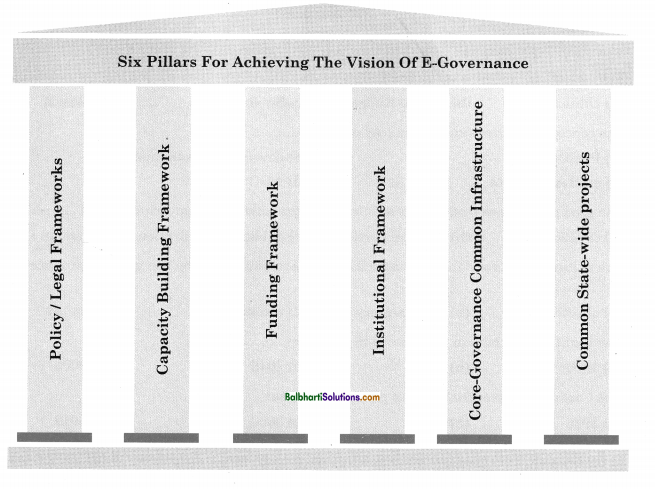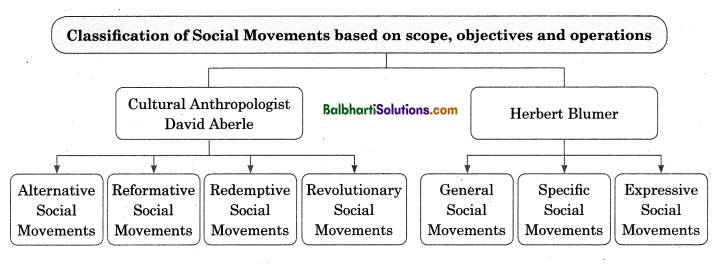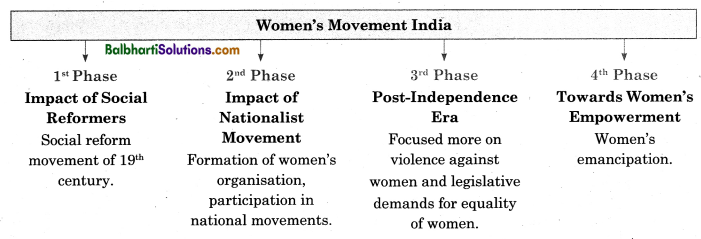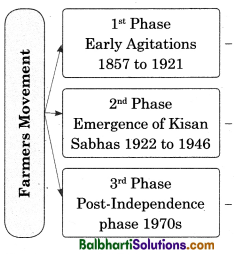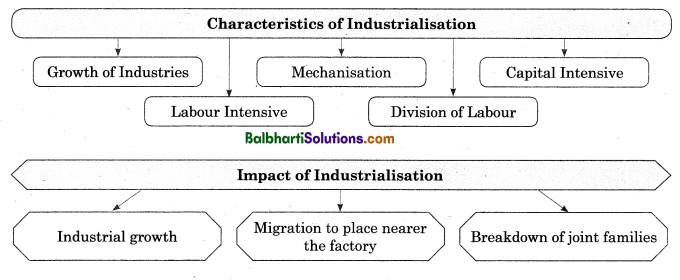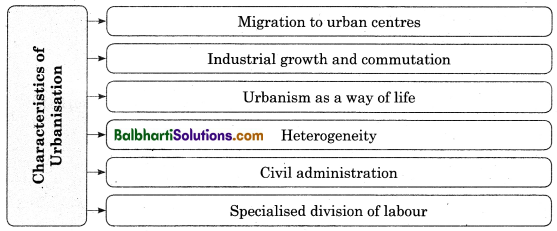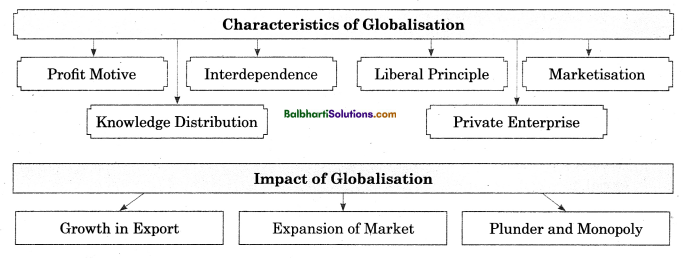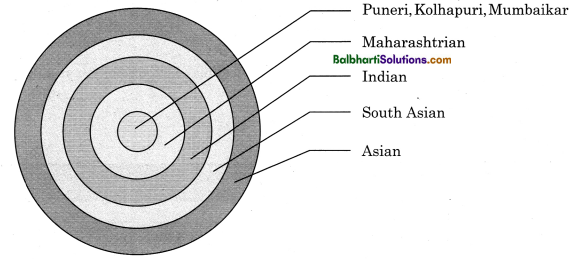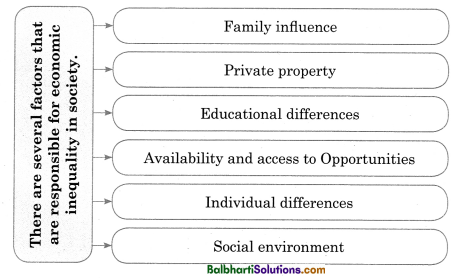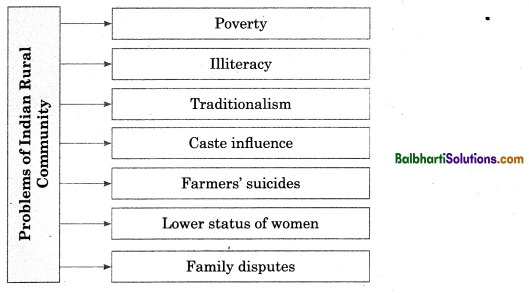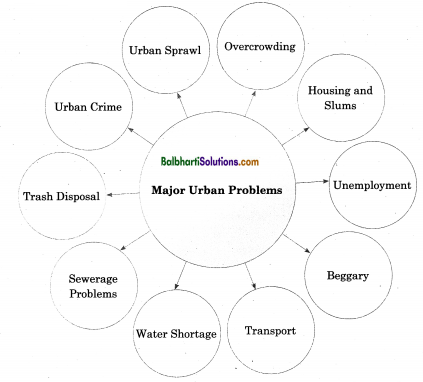By going through these Maharashtra State Board Class 11 History Notes Chapter 16 Swarajya to Empire (Maratha Period) students can recall all the concepts quickly.
Maharashtra State Board Class 11 History Notes Chapter 16 Swarajya to Empire (Maratha Period)
Contribution of Sants:
Superstition and rituals ruled at large in medieval Indian society. People had become fatalistic and inert. The condition of the common people was miserable. These were the times when the saints in Maharashtra made efforts to bring the masses back to life. In Maharashtra, the tradition of saints, which began with Chakradhar Swami, Sant Namdev, Sant Dnyaneshwar, Sant Eknath, Sant Tukaram, and Samarth Ramdas. It was continued by sants coming from various strata of the society.
Foundation and Expansion of Swarajya:
In the first half of the 17th century, Nizamshahi and Adilshahi had established their rule in Maharashtra. Many eminent Maratha sardars flourished under their rule. They held Jahagirs in the remote regions of the Sahyadris. The difficult terrain of Sahyadri allowed them to operate independently. Shahajiraje Bhosale was a prominent Sardar in the Nizamshahi kingdom. After the end of Nizamshahi’s rule, he accepted the rank of a Mansabdar in the Adilshahi court.
The concept of Swarajya was visualized by Shahajiraje and it was turned into reality by Chh. Shivaji Maharaj. Chh. Shivaji Maharaj laid the foundation of Swarajya from the Mawal region. Several factors like the topography of Maharashtra, valour of the local Mawalas, the administrative and military experience gained by the Maratha sardars while working with Nizamshahi, and Adilshahi and above all these the able leadership of Chh. Shivaji Maharaj could make it possible.
Chh. Shivaji Maharaj had anticipated the intentions of Afzalkhan, who had taken up the challenge of killing Chh. Shivaji Maharaj. He met Afzalkhan at Pratapgad. As expected Afzalkhan attempted treachery but Chh. Shivaji Maharaj was well prepared and killed Afzalkhan in self-defense. Afzalkhan’s huge army was set on the run and huge booty and weapons were collected left behind by them. This made Swarajya’s treasury richer.
![]()
Maratha War of Independence:
After the death of Chhatrapati Shivaji Maharaj, Chhatrapati Sambhaji Maharaj was coronated as the King of Swarajya. During his reign, a constant conflict continued with the Mughal Emperor Aurangzeb. Aurangzeb’s rebellious son Akbar had established friendly relations with Sambhaji Maharaj. Enraged by this Aurangzeb came down to Deccan along with a huge army and able sardars, who were veterans of warfare. For the next 25 years, he camped in Maharashtra and fought against the Marathas.
After Chhatrapati Sambhaji Maharaj, Chhatrapati Rajaram Maharaj took over the reins at Raigad. Aurangzeb sent Zulfikar Khan to seize the fort of Raigad. Chhatrapati Rajaram Maharaj, Maharani Tarabai, Maharani Yesubai (Queen of Chhatrapati Sambhaji Maharaj) and her son Prince Shahu were staying at Rajgad.
After the death of Rajaram Maharaj (March, 1700 C.E.), his wife Maharani Tarabai continued to fight against Aurangzeb. Maharani Tarabai led the Swarajya movement under extremely unfavourable conditions. She single-handedly took charge of the administration and fought for Swarajya for twenty-five years with the help of her sardars.
Administrative System established by Chhatrapati Shivaji Maharaj:
The regions in Maharashtra including Nashik, Pune, Satara, Sangli, Kolhapur, Sindhudurga, Ratnagiri, Raigad; Belgaum, Karwar, Dharwad in Karnataka; some regions of Andhra, Jinji and Vellore in Tamil Nadu comprised Swarajya. Chh. Shivaji Maharaj set up an ideal administrative system for the smooth running of Swarajya’s affairs.
The formation of the Ashtapradhan Mandal (council of eight ministers) and its growth took place along with the expansion of the kingdom. After coronation, Chhatrapati Shivaji Maharaj created special posts of Ashtapradhans. It included ‘Peshwa’, ‘Amatya’, ‘Sachiv’, ‘Mantri’, ‘Senapati, ‘Sumant’, ‘Nyayadhish’ and ‘Panditrao’.
There was a special officer called ‘Darakdar’ appointed to look after every department of the ministry. Other officers were ‘Diwan’ (Secretary) ‘Majumdar’ (Auditor and Accountant). ‘Phadnis’ (Deputy Auditor), ‘Sabnis’ (Office in-charge), ‘Karkhanis’ (Commissary), ‘Chitnis’ (Correspondence Clerk), ‘Jamdar’ (Treasurer), ‘Potdar’ (Assay Master) etc.
Release of Shahu Maharaj:
The Mughals continued their efforts to defeat the Marathas, even after the death of Aurangzeb. For that purpose they adopted the strategy of dividing the Marathas. They released Shahu Maharaj from captivity in 1707 C.E. After his release there was a conflict between Maharani Tarabai and Shahu Maharaj. Shahu Maharaj won the ensuing battle. Balaji Vishwanath played an important role on behalf of Shahu Maharaj and later he was appointed as Peshwa.
Peshwa Period:
After Balaji Vishwanath, his son, Bajirao I was appointed as the Peshwa. He expanded the Maratha empire upto Malwa, Rajasthan and Bundelkhand. He defeated the Nizam. After Bajirao I, Balaji Bajirao alias Nanasaheb was appointed as the Peshwa. Madhavrao Peshwa tried to re-establish the Maratha power. The defeat in Panipat was not just a political defeat but it also lowered the morale of the Marathas greatly.
Madhavrao Peshwa tried to elevate the spirits of Marathas as well as re-establish the Maratha power in the north. The Marathas were successful in overcoming the great defeat at Panipat and create a politically strong position for themselves in the politics of the north.
Malharrao was the founder of the Holkar State at Indore. He served the Maratha power for a long time.
![]()
Art, architecture, literature:
Art: The development of Maratha miniature paintings is seen through illustrations on the manuscripts such as pothis, pattachitra and patrikas. The same style is maintained in the glass paintings as well. Illustrated manuscripts of Sanskrit texts such as ‘Bhagvat Gita’, ‘Devi Saptashati’, ‘Bhagvat Purana’ as well as Marathi texts such as ‘Dnyaneshwari’ (Bhavarthadipika), ‘Shivaleelamrut’, ‘Pandavapratap’ etc., are available. The paintings of Dashavatara are included in them.
The wooden stands of the pothis have paintings of various deities such as Ganapati, Riddhi-siddhi, Ramapanchayatana, Gopalkrishna, Vishnulakshmi in dark red, green and yellow colours. The miniature paintings include human portraits and themes like raga mala, talamala, processions etc.
Architecture: Chh. Shivaji Maharaj gave priority to build forts. The tradition of building forts was prevalent in the Deccan in the last three centuries. This tradition proved to be of advantage to Chh. Shivaji Maharaj. The required expertise of maintaining forts was easily available to him. The Kasaba temple in Pune and Vitthal temple in Vitthalwadi were reconstructed by Veermata Jijabai.
During the Peshwa period, the Maratha kingdom regained its prosperity and all forms of art and architecture once again received patronage. Pune, Satara and Nashik developed into big cities. These cities had well-paved roads, wadas on both sides of the road and arched gates at intervals. The construction of temples began on a large scale during the later Peshwa period.
These temples were of three types. Examples of the temple architecture of this period are found at Saswad (‘Vateshwar’, ‘Sangameshwar’), Mahuli (‘Vishweshwar’), Jejuri etc. These are huge in size.
Literature: Marathi literature developed greatly during this period. Sant Tukaram of this period was a poet of the Warkari sect. Samarth Ramdas wrote ‘Dasbodh’ and ‘Manache Shlok’ in Marathi. Chhatrapati Shivaji Maharaj got the ‘Rajyavyavaharakosha’ prepared which was a compilation of Sanskrit lexicon for Persian terms.
Chhatrapati Sambhaji Maharaj was a great writer and Sanskrit scholar. The Sanskrit text ‘Budhabhushan’ was written by him. This text is an overview of ancient texts on polity. Apart from Sanskrit, he also knew many other languages. He wrote texts in Brij language namely ‘Nayikabhed’, ‘Nakhshikh’ and ‘Satasattak’.
Trade, industries and social life:
Chhatrapati Shivaji Maharaj was aware of the importance of a flourishing trade for the economic well-being of the state. He encouraged the traders and merchants by creating Peths (market places). ‘Shete’ and ‘Mahajan’ were the officers who supervised the transaction of these Peths. Chaul, Rajapur, Dabhol, Kelshi, Ratnagiri were some of the important ports and trade centres of this period.
Commodities like black pepper and lac etc. were exported from Dabhol. Silk, opium, and indigo were exported from Chaul. Black pepper, cardamom, cotton cloth were the items of trade in Rajapur.
![]()
Glossary:
→ Irreparable loss – Too bad or too serious to repair.
→ Strife – Angry or bitter disagreement over fundamental issues.
→ Valiant – Very brave, full of courage.
→ Mansabdar – A military officer who maintains his own division of soldiers.
→ Stucco – A type of plaster used for covering walls and decorating ceilings.

